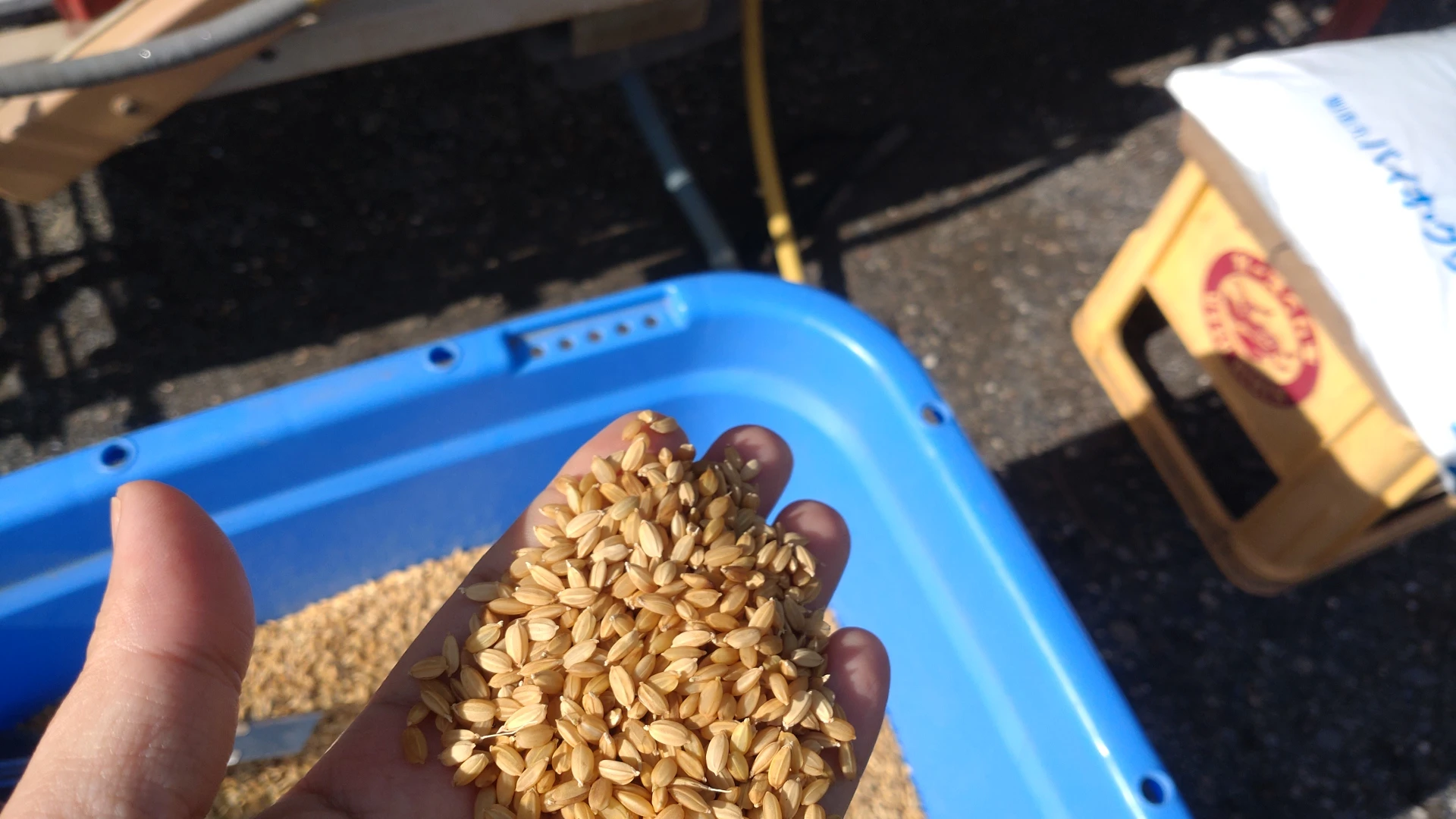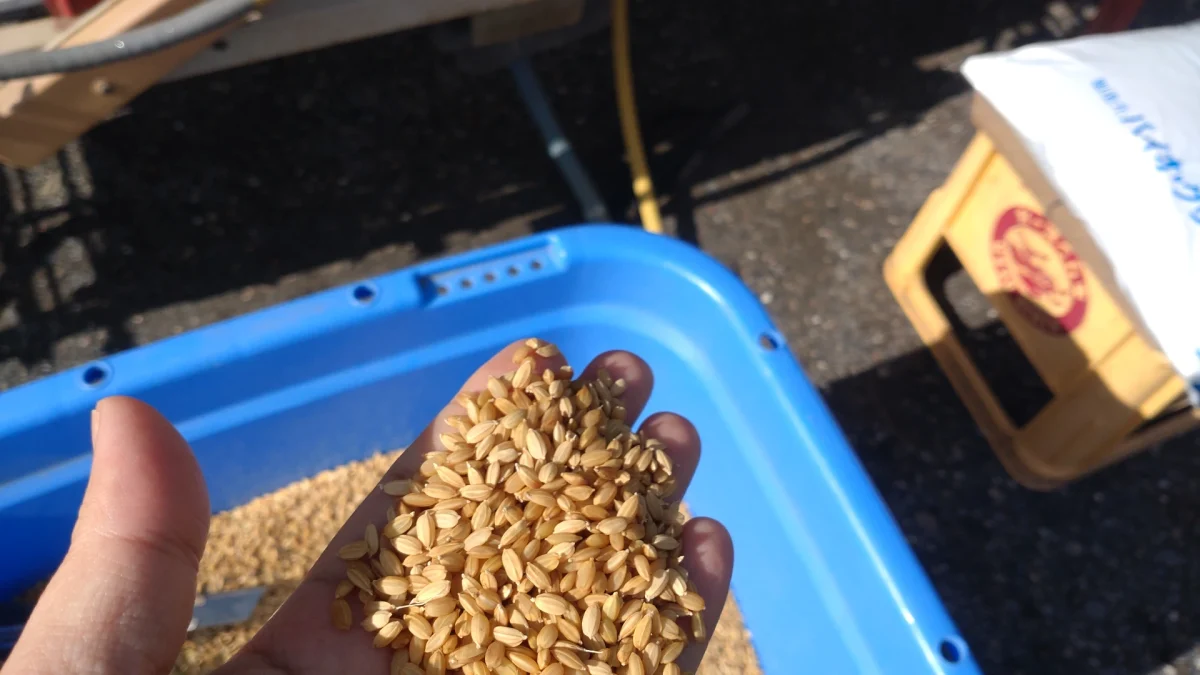
As May begins, my family home is also starting preparations for rice planting.
It will be June before the seedlings that have sprouted are ready to be planted in the paddy fields, but the start of these preparations makes me realize that rice cultivation has begun again this year.
Since I’m at it, I thought I’d write a blog post to briefly explain rice farming in Japan.
The Rice-Growing Year
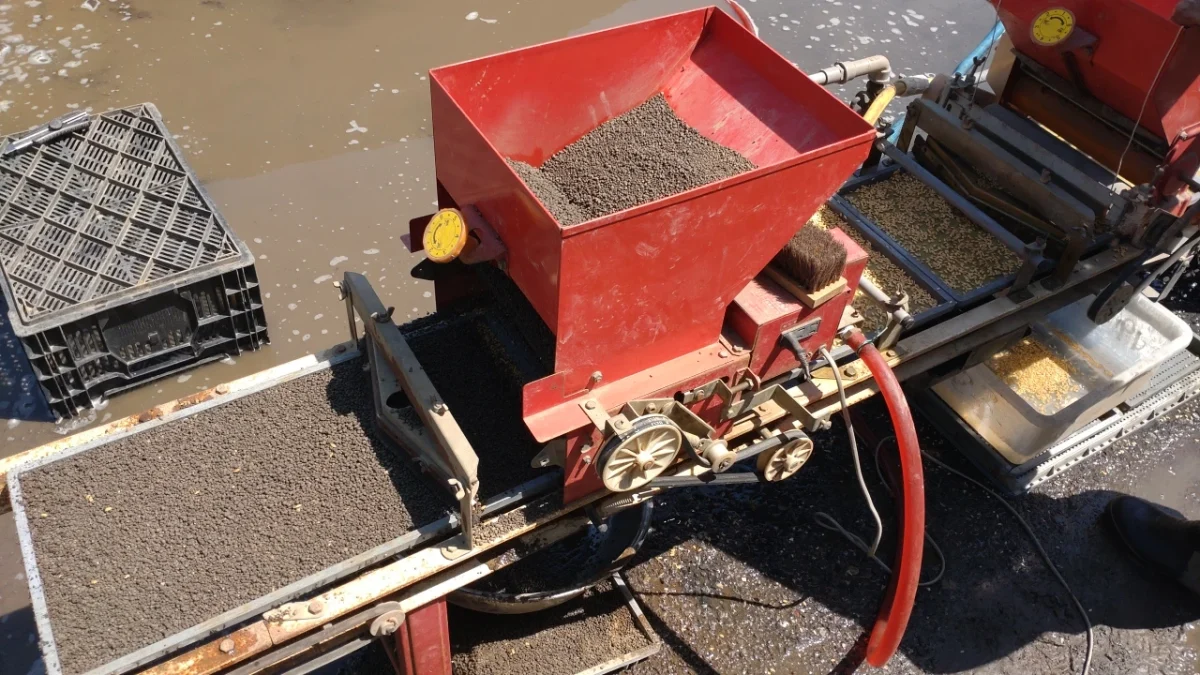
Okay, here’s how rice farming typically progresses in Japan throughout the year:
- Getting the Seeds Ready:
- Selecting the Seeds: First, the rice farmers choose the seeds they’re going to plant that year. They use methods like a saltwater test to get rid of any immature or bad seeds, making sure they only use the healthy ones that are most likely to sprout well.
*For brine selection, add approximately 4.2 pounds of salt to every 2.6 gallons of water and use the rice seeds that sink(10 liters of water, 1.9 kg of salt). - Soaking the Seeds (Seed Soaking or Steeping): The good seeds they’ve picked out then get soaked in water. This is called “soaking” or “steeping” the seeds. It helps them absorb the water they need to start growing. The temperature of the water and how long they soak them depends on the type of rice and the weather that year. Usually, it’s anywhere from a few days to about a week. This soaking step gets the seeds all hydrated and ready to sprout.
- Selecting the Seeds: First, the rice farmers choose the seeds they’re going to plant that year. They use methods like a saltwater test to get rid of any immature or bad seeds, making sure they only use the healthy ones that are most likely to sprout well.
- Growing the Seedlings:
- Sprouting (Pre-germination): After soaking, the seeds are kept in a warm and humid place to encourage them to start sprouting. You’ll see tiny white sprouts (called “young seedlings”) starting to emerge. Once they’ve sprouted a bit, they’re ready to be planted.
- Sowing the Sprouted Seeds (Seeding): The sprouted seeds are then spread evenly on top of soil in special seedling boxes or trays.
- Raising the Seedlings (Nurturing the Seedlings): These seedling boxes are kept in a controlled environment where the temperature and sunlight are just right. They get regular watering and sometimes fertilizer to help them grow into strong, healthy young rice plants that are ready for transplanting.
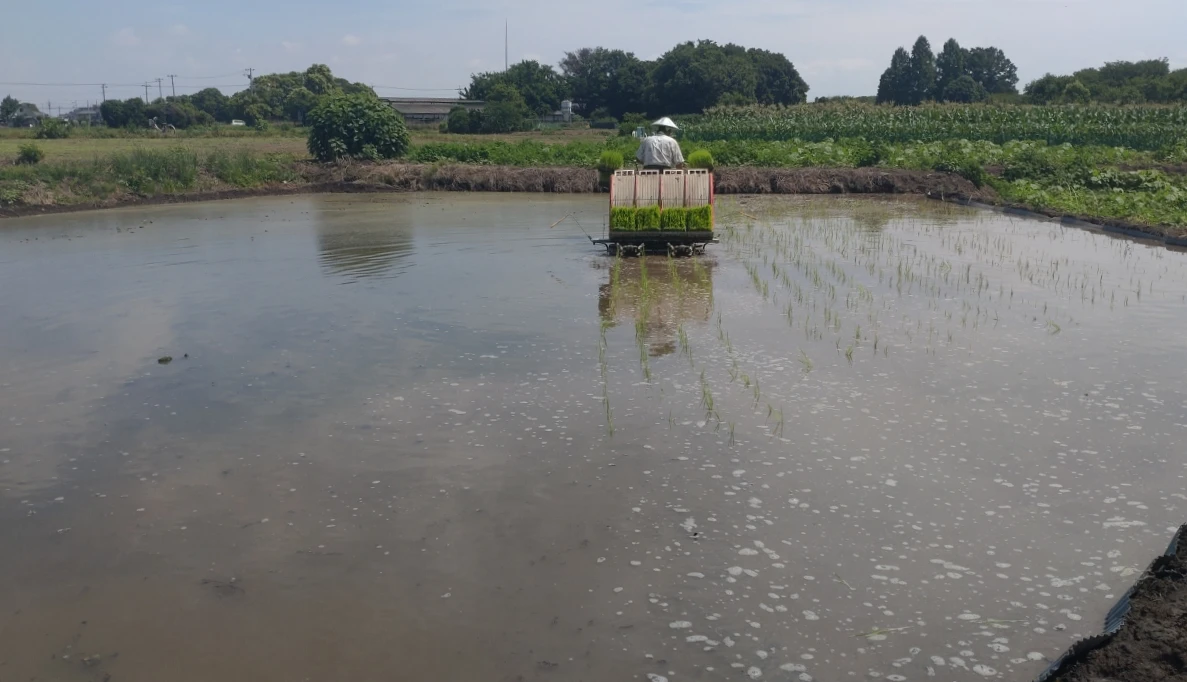
- Transplanting the Seedlings (Planting in the Paddy):
- Preparing the Paddy Field: While the seedlings are growing, the farmers get the main rice field, called a “paddy field” (or just “paddy”), ready. These fields are specially designed to hold water. They’ll plow the field and then flood it with water, creating a muddy, level surface. Sometimes they’ll use machines called tillers to churn up the soil and mix it with water. This makes a nice, soft bed for the young rice plants.
- Transplanting: Once the seedlings are strong enough, they’re carefully moved from the seedling boxes and planted into the flooded paddy field. Traditionally, this was done by hand, with farmers bending over and planting small bunches of seedlings in neat rows in the mud. Nowadays, you’ll often see special machines called rice transplanters doing this job much faster and more efficiently. The seedlings are planted with enough space between them to allow them to grow and spread out.
- Growing and Caring for the Rice Plants:
- Water Management: Once the seedlings are in the paddy, keeping the field flooded with the right amount of water is super important throughout the growing season. The water helps keep the weeds down, gives the plants nutrients, and keeps the soil at a good temperature. The farmers carefully watch the water level, sometimes draining it and then flooding it again as the rice grows.
- Weed and Pest Control:Just like any other crop, rice can have problems with weeds and bugs. Farmers take steps to control these, sometimes using sprays (herbicides or pesticides) and sometimes using more traditional ways to keep the rice healthy.
- Fertilizing:To help the rice plants grow big and strong and produce a good harvest, farmers often add fertilizer to the paddy field. This gives the plants the food they need to grow healthy and produce lots of grain.
- Watching and Waiting: Over the summer, the rice plants get taller and start to develop heads of grain. The color slowly changes from green to a golden yellow as the rice gets ripe. The farmers keep a close eye on their fields, checking how the plants are growing and staying healthy, and waiting for the perfect time to harvest.
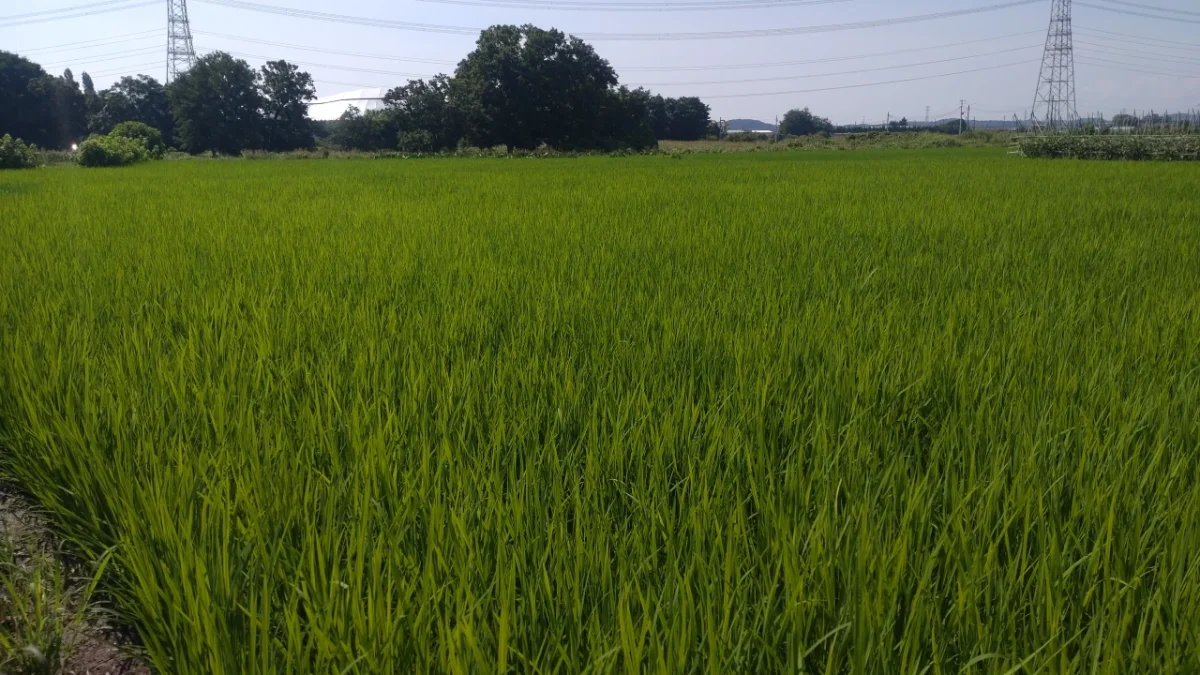
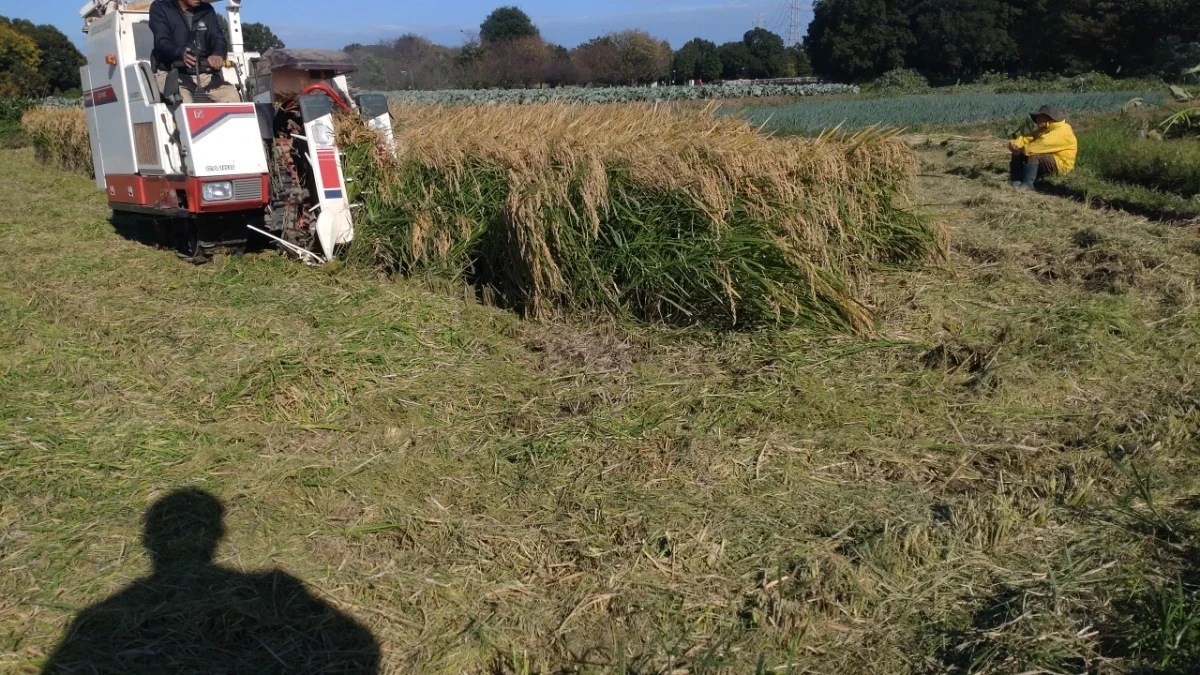
- Harvesting the Rice:
- Draining the Water (Drawing Down the Water):When the rice heads are nice and full and starting to droop, about one to two weeks before harvest, the farmers drain the water out of the paddy field. This helps dry out the ground so the harvesting machines can get in easily and also helps the rice mature fully.
- Harvesting:Once the rice heads are ripe and golden, it’s harvest time. Most rice farmers in Japan use combine harvesters. These machines cut the rice stalks, separate the grains from the stalks (that’s called “threshing”), and clean the grains all at the same time. It’s a pretty efficient process.
- Drying the Rice: After it’s harvested, the rice grains still have a lot of moisture in them. They need to be dried to keep them from going bad and to get them ready for storing and milling. You’ll often see the harvested rice spread out on racks or platforms to dry in the sun, or farmers will use mechanical dryers to get the moisture content just right.
- Processing the Rice:
- Hulling (De-husking): Once the rice is dry, the tough outer shell (called the husk) needs to be removed. This process is called “hulling” or “de-husking.”
- Milling (Polishing): After hulling, you get brown rice. To make the white rice that people usually eat, the outer layers (the bran and the germ) are removed in a process called “milling” or “polishing.” How much they mill the rice can change, giving you different kinds of white rice with slightly different tastes and textures.
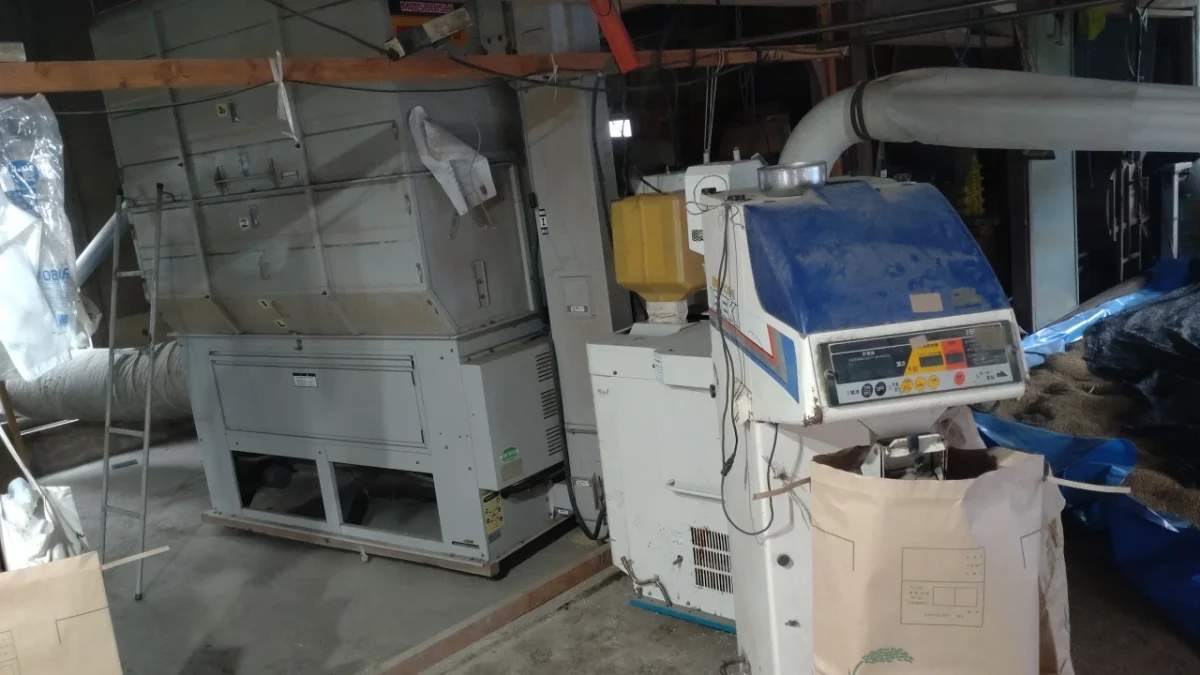
Additional Notes on Japanese Rice Farming:
About “Tanbo” or Paddy Fields:Japanese “tanbo,” or paddy fields, aren’t just flooded fields. Farmers flood fields with good water retention, cultivating the top eight inches or so of soil until it’s nice and muddy. When they transplant the rice seedlings, which are about seven inches tall, they plant them individually. They should go about an inch and a half into the soil, with the tips of the leaves sticking out around four inches or so above the water.
About “Seimai” or Rice Milling: The harvested brown rice goes through a process called “seimai,” or rice milling. This removes the outer layers, resulting in the rice you see on your dinner table. These days, it’s done using mechanical equipment.
My Thoughts on Japanese Rice Farming
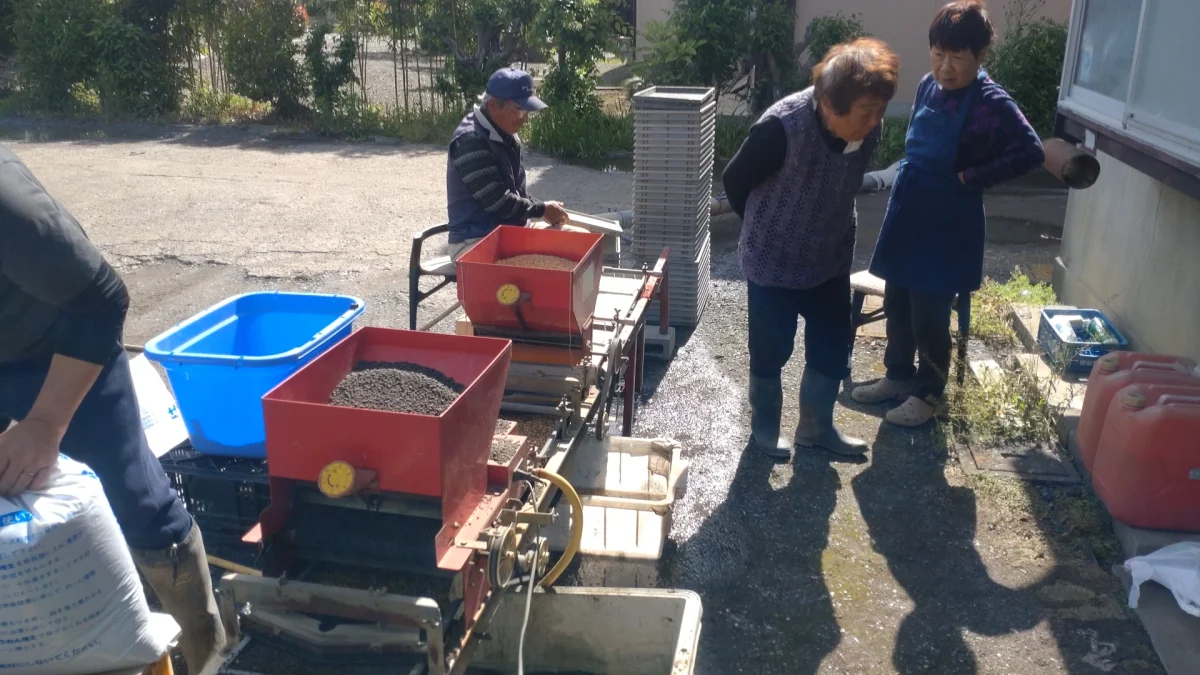
On this day, my dad, my mom, my younger brother, and I gathered to sow the seeds.
A neighbor also stopped by to see how things were going, and my mom seemed to be enjoying the chat.
In Japan, the number of farmers involved in rice cultivation is decreasing year by year.
This is naturally related to the decline in the farming population. My mom and dad’s average age is already around 80, so I don’t know how much longer they’ll be able to continue growing rice. I work as a company employee myself, so while I can help with the rice farming, I can’t be the one primarily responsible for it.
Even so, the scenery of Japanese rice farming, which I’ve been familiar with since childhood, brings a sense of nostalgia and a certain peace of mind.
Moving forward, I want to continue helping my parents with rice farming as much as I can. I also sincerely hope that the beautiful rural landscapes of Japan will remain for generations to come.

